| Listing 1 - 10 of 28 | << page >> |
Sort by
|
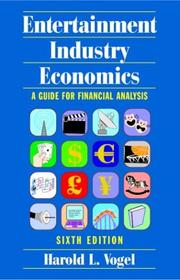
ISBN: 0521836123 Year: 2004 Publisher: Cambridge Cambridge University Press
Abstract | Keywords | Export | Availability | Bookmark
 Loading...
Loading...Choose an application
- Reference Manager
- EndNote
- RefWorks (Direct export to RefWorks)
Book
ISBN: 9780750683548 9780080942087 9781136435416 9781136435454 9781136435461 9781138168824 Year: 2009 Publisher: Amsterdam Elsevier
Abstract | Keywords | Export | Availability | Bookmark
 Loading...
Loading...Choose an application
- Reference Manager
- EndNote
- RefWorks (Direct export to RefWorks)
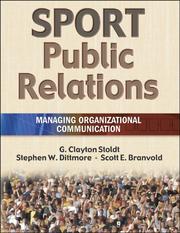
ISBN: 0736053409 9780736053402 Year: 2006 Publisher: Champaign Human Kinetics
Abstract | Keywords | Export | Availability | Bookmark
 Loading...
Loading...Choose an application
- Reference Manager
- EndNote
- RefWorks (Direct export to RefWorks)
Sports --- Mass media and sports --- Communication in organizations --- Public relations --- 659 --- 79 --- Athletics --- Sports and mass media --- Organizational communication --- Organization --- Reclame. Public relations --- Ontspanning. Spel. Sport. Lichamelijke expressie --- Sports - Public relations
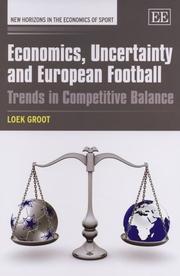
ISBN: 9781847205919 Year: 2008 Publisher: Cheltenham Elgar
Abstract | Keywords | Export | Availability | Bookmark
 Loading...
Loading...Choose an application
- Reference Manager
- EndNote
- RefWorks (Direct export to RefWorks)
Soccer --- markteconomie --- sectoriële analyse --- sport --- statistiek --- welvaartseconomie --- 33 --- 79 --- Europa --- Association football --- English football --- European football --- Football (Soccer) --- Football --- Economic aspects --- Finance --- Economie --- Ontspanning. Spel. Sport. Lichamelijke expressie --- Economics --- Recreation. Games. Sports. Corp. expression --- Europe
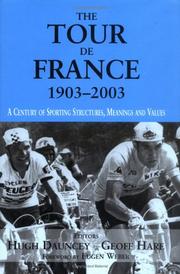
ISBN: 0203502418 9780203502419 9780714653624 0714653624 9780714682976 0714682977 9786610048120 6610048126 0714682977 0714653624 9781135762391 1135762392 9781135762346 1135762341 9781135762384 1135762384 1280048123 9781280048128 Year: 2003 Publisher: London Portland, OR F. Cass
Abstract | Keywords | Export | Availability | Bookmark
 Loading...
Loading...Choose an application
- Reference Manager
- EndNote
- RefWorks (Direct export to RefWorks)
This book analyses the Tour de France over its long history both as France's most prestigious and famous sporting event and as a European and, increasingly, a world cycling competition.
Bicycle racing --- Nationalism and sports --- 79 --- Sports and nationalism --- Sports --- Cycling --- Racing --- Social aspects&delete& --- History --- Ontspanning. Spel. Sport. Lichamelijke expressie --- Tour de France (Bicycle race) --- Grande boucle (Bicycle race) --- Tur de Frans (Bicycle race) --- History. --- Social aspects
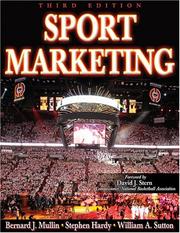
ISBN: 9780736060523 0736060529 Year: 2007 Publisher: Leeds Human Kinetics
Abstract | Keywords | Export | Availability | Bookmark
 Loading...
Loading...Choose an application
- Reference Manager
- EndNote
- RefWorks (Direct export to RefWorks)
Industrial economics --- Marketing --- Recreation. Games. Sports. Corp. expression --- Sports --- marketing --- Marketing ; sport --- 796.062 --- 658.88 --- 79 --- Organisatie, management en marketing van sport en recreatie --- Toegepaste marketing --- Ontspanning. Spel. Sport. Lichamelijke expressie --- 796.062 Organisatie, management en marketing van sport en recreatie --- Sports - Marketing
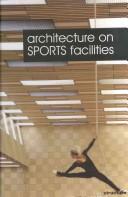
ISBN: 8493400777 Year: 2005 Publisher: Place of publication unknown Structure
Abstract | Keywords | Export | Availability | Bookmark
 Loading...
Loading...Choose an application
- Reference Manager
- EndNote
- RefWorks (Direct export to RefWorks)
architectuur --- architecture [discipline] --- field houses --- sportstadia --- sport --- sporthallen --- Recreation. Games. Sports. Corp. expression --- sports --- Public buildings --- Sports facilities --- Stadiums --- Equipements sportifs --- Stades --- Design and construction. --- Conception et construction --- Architectuur ; stadia ; sport --- Sportcomplexen ; sportstadia --- 725.89 --- Openbare gebouwen ; overige gebouwen voor sportdoeleinden --- Openbare gebouwen --- Architectuur --- Ontspanning. Spel. Sport. Lichamelijke expressie --- stadions --- zwembaden --- Hadid, Zaha --- Kurokawa, Kisho --- Architecture --- stadiums --- swimming pools
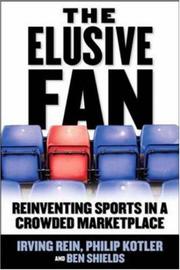
ISBN: 0071454098 9780071454094 Year: 2006 Publisher: New York McGraw-Hill
Abstract | Keywords | Export | Availability | Bookmark
 Loading...
Loading...Choose an application
- Reference Manager
- EndNote
- RefWorks (Direct export to RefWorks)
796.062 --- 79 --- 658.88 --- Organisatie, management en marketing van sport en recreatie --- Ontspanning. Spel. Sport. Lichamelijke expressie --- Toegepaste marketing --- 796.062 Organisatie, management en marketing van sport en recreatie --- Communication in marketing --- Professional sports --- Sports spectators --- Sports --- Spectators, Sports --- Sports fans --- Audiences --- Fans (Persons) --- Pro sports --- Marketing --- Economic aspects --- Spectators
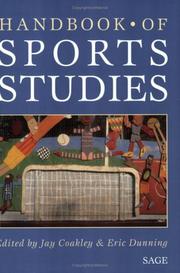
ISBN: 0761949496 080397552X Year: 2002 Publisher: London Sage
Abstract | Keywords | Export | Availability | Bookmark
 Loading...
Loading...Choose an application
- Reference Manager
- EndNote
- RefWorks (Direct export to RefWorks)
79 --- 301.595 --- Ontspanning. Spel. Sport. Lichamelijke expressie --- Sociologie van de sport --- Sports sciences --- Sciences du sport --- -Sports sciences --- Sciences, Sports --- Sport sciences --- Sports --- 316.7:796 --- 316.7:796 Sociologie van de sport --- Field sports --- Pastimes --- Recreations --- Recreation --- Athletics --- Games --- Outdoor life --- Physical education and training --- Science --- Sociological aspects --- Study and teaching --- Handbooks, manuals, etc. --- Guides, manuels, etc --- Aspect sociologique --- Etude et enseignement
Book
ISBN: 9780813937724 Year: 2015 Publisher: Charlottesville, Va University of Virginia Press
Abstract | Keywords | Export | Availability | Bookmark
 Loading...
Loading...Choose an application
- Reference Manager
- EndNote
- RefWorks (Direct export to RefWorks)
Created for children but designed by adults with considerable ingenuity, architectural toys have long offered a window on a much larger world. In Architecture in Play, Tamar Zinguer explores the nearly two-hundred-year period over which such playthings have reflected changing attitudes toward form, structure, and permanence, echoing modernist experiments and stylistic inclinations in fascinating ways while also incorporating technological advances in their systems of construction. Zinguer's history of these toys reveals broader social and economic trends from their respective periods. Used in the intimacy of the domestic environment, a setting that encouraged the eradication of formal habits and a reconceiving of visual orders, architectural toys ultimately intimated notions of the modern. Amply illustrated and engagingly written, this book sheds valuable light on this fascinating relation between household toys and the deeper trends and ideas from which they sprang... Focusing on four primary building materials (wood, stone, metal, and paper), Tamar Zinguer discusses a series of important architectural toys: Friedrich Froebel's Gifts (1836), cubes, spheres, and cylinders that are gradually broken down to smaller geometrical parts; Anchor Stone Building Blocks (1877), comprising hundreds of miniature stone shapes that yield castles, forts, and churches; Meccano (1901) and Erector Set (1911), including small metal girders to construct bridges and skyscrapers mimetic of contemporary steel structures; and The Toy (1950) and House of Cards (1952), designed by Charles and Ray Eames, which are lightweight cardboard 'kits of parts' based on methods of prefabrication.
Architectural toys --- Play (Philosophy) --- Architecture and recreation --- Architecture and society --- Jeux de construction --- Architecture et enfants --- Jeu (philosophie) --- Architecture de loisirs --- Architecture --- Aspect social --- Cultuurfilosofie. Cultuurpsychologie --- Architectuur --- Ontspanning. Spel. Sport. Lichamelijke expressie --- bouwkundig speelgoed --- spel --- Philosophy and psychology of culture --- Recreation. Games. Sports. Corp. expression --- architectural toys --- play [recreation] --- Jeux de construction. --- Architecture et enfants. --- Architecture de loisirs. --- Aspect social.
| Listing 1 - 10 of 28 | << page >> |
Sort by
|

 Search
Search Feedback
Feedback About UniCat
About UniCat  Help
Help News
News